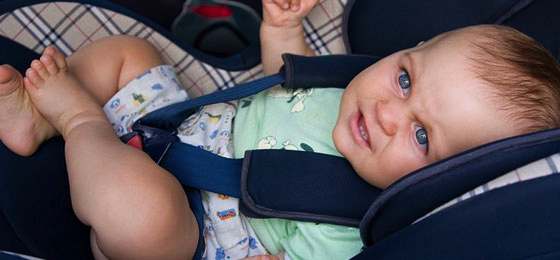- MENU
- HOME
- SEARCH
- WORLD
- MAIN
- AFRICA
- ASIA
- BALKANS
- EUROPE
- LATIN AMERICA
- MIDDLE EAST
- United Kingdom
- United States
- Argentina
- Australia
- Austria
- Benelux
- Brazil
- Canada
- China
- France
- Germany
- Greece
- Hungary
- India
- Indonesia
- Ireland
- Israel
- Italy
- Japan
- Korea
- Mexico
- New Zealand
- Pakistan
- Philippines
- Poland
- Russia
- South Africa
- Spain
- Taiwan
- Turkey
- USA
- BUSINESS
- WEALTH
- STOCKS
- TECH
- HEALTH
- LIFESTYLE
- ENTERTAINMENT
- SPORTS
- RSS
- iHaveNet.com: Parenting

Baby Car Seat Safety: What Every New Parent Needs to Know
by Dana Sullivan
Having and installing the proper car seat saves lives. Get informed before you bring baby on board
Shopping for a baby car seat may not be as much fun as picking out a crib and layette, but it's one of the most important products you'll choose as a new parent.
According to the American Academy of Pediatrics, more children are killed and injured in car crashes than from any other type of injury. (For a comprehensive car seat safety guide, visit AAP.org.) If every parent used a properly installed baby car seat, traffic deaths of children 4 years old and younger would be cut in half.
All baby car seats must meet federal safety standards, but safety experts say that seats with five-point harness restraint systems are the safest. Many new models have built-in tethers for added security, but for others you may need to buy a tether kit separately and have a tether anchor installed in your car by the dealer.
Here are a few tips to keep in mind when you're buying and installing a baby car seat.
1. There are four basic car seat styles
- Rear-facing car seat/carriers for newborns and 1-year-olds
- Convertibles, which face the car's rear for babies and older toddlers, and which then face forward for preschoolers (note: Children should ride in the rear-facing position until they are at least 2 years old or reach the maximum height and weight for their seat -- whichever comes last)
- Front-facing seats for preschoolers
- Belt-positioning boosters for older children until they're at least 4 feet 9 inches and between 8 and 12 years old.
2. Read your vehicle's owner's manual carefully
Some vehicles -- especially older models -- may not safely accommodate a car seat in the rear middle seat. If you don't have the owner's manual, call the manufacturer to request one.
3. Install several different types of car seats in your car before you buy one
Follow the manufacturer's installation instructions exactly. You'll discover that some baby car seats fit more securely in your car than others. Be sure to use a locking clip if your car's seatbelt doesn't lock in place once the seat is installed.
4. To securely and safely install a baby car seat
Use the full weight of your knee to press it down into the automobile's upholstery while tightening the seatbelt to the car seat or its base. The car seat should be held firmly against the car's seat back. If you pull it forcefully, the seat should barely tip forward and backward or from side to side. If you can move it more than 2 inches in any direction, it's not adequately secured.
5. Never use a baby car seat in the front seat of a car with a passenger side airbag
Ideally, never use one in the front seat. The safest place is in the rear middle seat.6. Find out when there will be a car seat check near your home
Many hospitals, fire departments and police departments periodically sponsor drive-through events, during which an expert will check if your car seat is properly installed.Check SafeKids.org to learn about upcoming events in your area.
For recalls or other safety concerns about your child's car seat, call the National Highway Traffic Safety Administration's Auto Safety Hotline at 888-327-4236, or visit NHTSA.gov.
AUTOS | HOBBIES | EDUCATION | FAMILY | FASHION | FOOD & RECIPES | HOME DECOR | RELATIONSHIPS | PARENTING | PETS | TRAVEL | WOMEN
Parenting: "Baby Car Seat Safety: What Every New Parent Needs to Know"